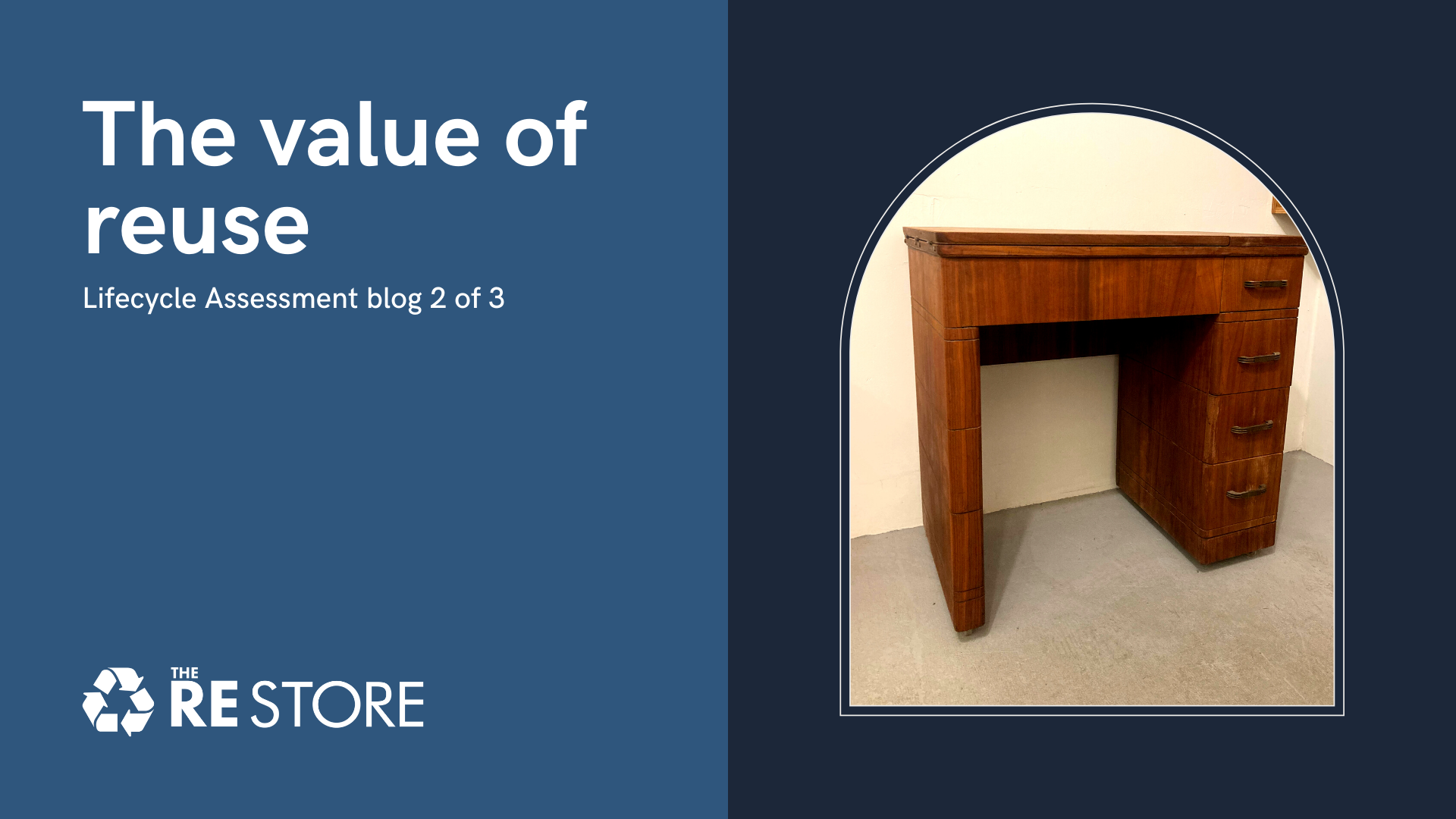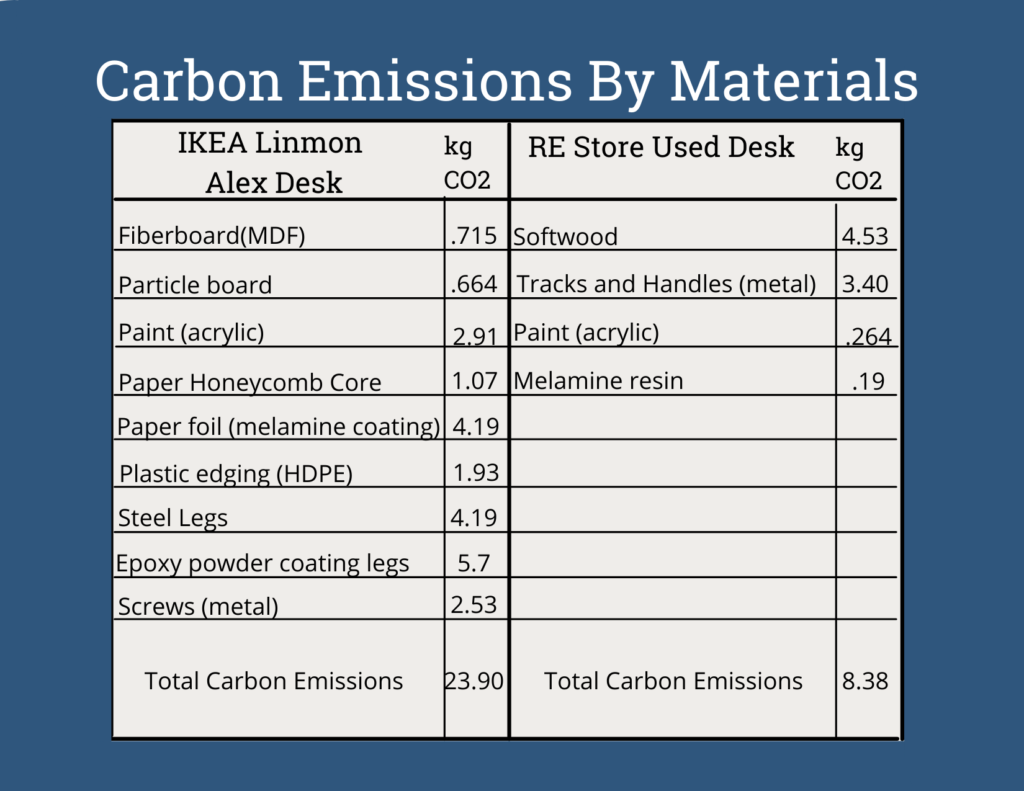
This is the second post in a three part blog series. Read blog post 1 here. Thank you to WWU’s Institute for Energy Studies Life Cycle Assessment class for analyzing our furniture.
Have you ever looked around a room and considered the environmental impact that goes into getting furniture to your home, school, or office? Behind all that mid century modern motif is a cost that goes overlooked: carbon emissions. The production of raw materials, transportation, use and lifespan, and eventual disposal of furniture all contributes to negative environmental impacts.
Fast furniture is furniture pieces that are designed to last 5 years — about as long as design trends. These pieces are created quickly and inexpensively with materials that are difficult to repair. While you may be using the same couch you found on the side of the road 3 summers ago like many other Bellinghamsters, fast furniture is a large contributor to our landfills. The EPA estimates that the United States throws away about 10 million lbs of furniture each year. And on a local level, construction and demolition waste increases yearly in the Whatcom County waste stream.
We understand that consumers have a lot to consider when shopping for furniture. Dimensions, comfort, color, shipping options, and ease of assembly to name a few. If you have the opportunity to shop with us, however, we’ll take the burden of considering environmental impact off your shoulders. At The RE Store, we aim to divert as much reusable material as possible from the landfill and to build a culture of reuse in our community. Western Washington University’s (WWU) Institute for Energy Studies Life Cycle Assessment class developed a technique to quantify the value of reuse. Recent WWU grad, Grace Cognasso explains more.
“Part of our work included a comparison assessment between new furniture purchased at IKEA and previously-owned furniture found at The RE Store. We chose to compare with Ikea because we wanted to see the differences in carbon emission in buying a brand new piece of furniture and one that is pre-owned and ready for a second life.
“A desk from The RE Store is made of softwood, tracks and handles, acrylic paint, and a melamine resin seal. A desk from IKEA, is mainly made from particle board, a paper honeycomb core, medium density fiberboard, high density polyethylene edging, epoxy powder, and metal. It is coated with paper foil, which is a coating that gives the particle board its finish. While both products use a melamine coating, the IKEA desk contains 4000% more melamine than The RE Store desk.” To get a deeper dive into Cognasso’s process, read last month’s blog post.
You may have heard that particle board, which makes up 74% of the IKEA desk, is an eco-friendly alternative to hardwood. Cognasso explains the hidden truth behind particle board: “Particle board, often called engineered wood, is made up of wood particles or fibers bound with glue and often topped with a thin layer of wood veneer or melamine foil. On the surface, particle board seems like the perfect solution to deforestation. It combines leftover wood scraps and sawdust to make a wood-like product that can be used in furniture construction. However, when you take into account the entire life cycle of particle board, it is clear that particle board has a much greater environmental impact than solid wood. Unlike particle board, solid wood has been the choice of furniture production for hundreds of years because it is durable, repairable, and can be recycled at the end of its lifecycle. Since particle board is held together by glue, it cannot be recycled, meaning there is a ton of ‘eco-friendly’ particle board rotting away in landfills.”

In addition to the differences in embodied carbon, we reduce waste while we create furniture. Revision Division only uses salvaged materials to build furniture for The RE Store. This means that our designer builders are diverting waste while building one-of-a-kind pieces.
We understand all the information that consumers deliberate when shopping for furniture. The product’s environmental impact might be one consideration too many. So know that if you’re buying the desk from the RE Store, we have yours and the environment’s best interest in mind. We take a lot of pride in our ability to produce high-quality, long-lasting, affordable, repairable, and sustainable furniture. The only thing you need to remember to do is to shop with us. Let us be responsible for considering the embodied carbon.
To contact Grace Cognasso about her work, find her on LinkedIn or send her an email.
